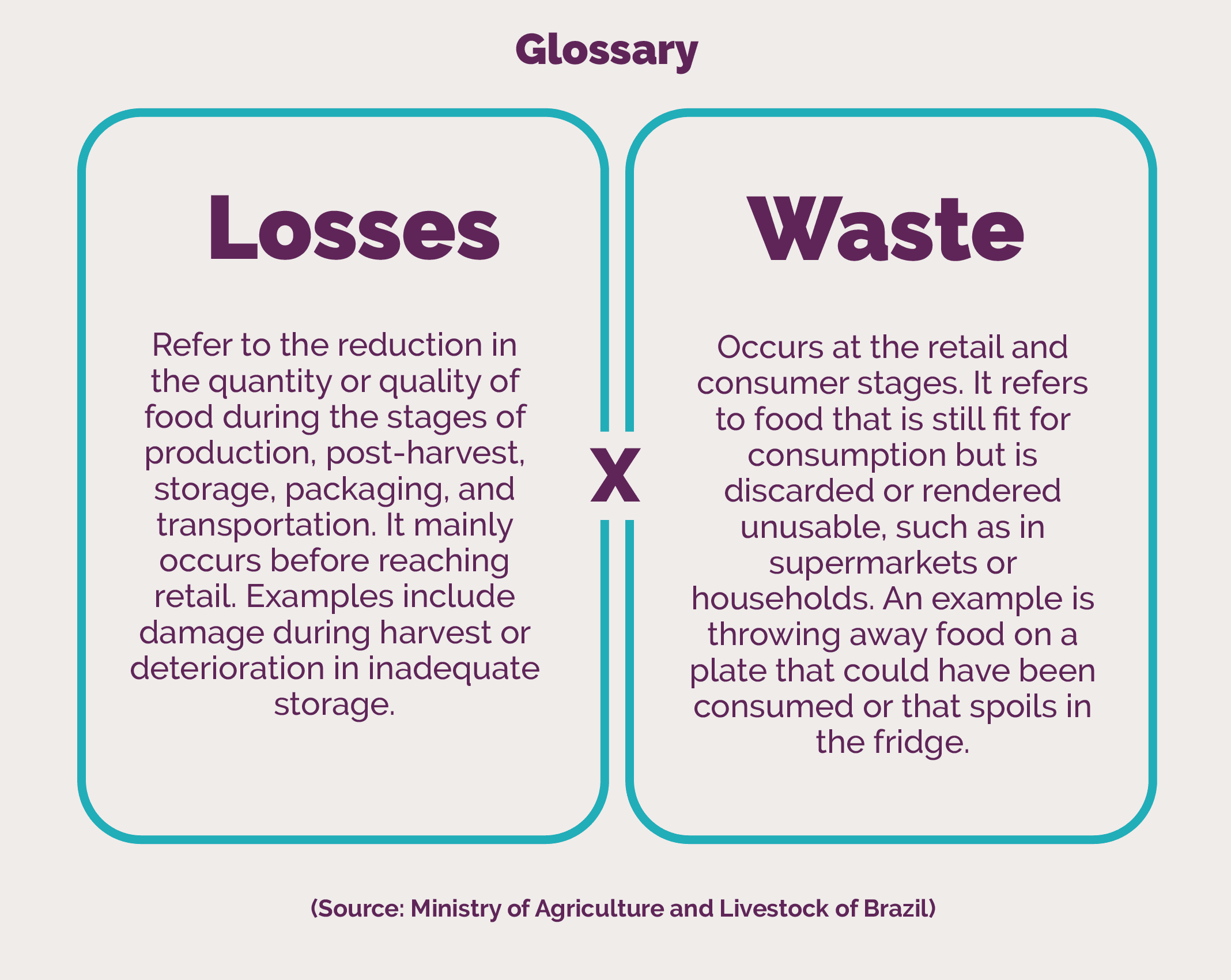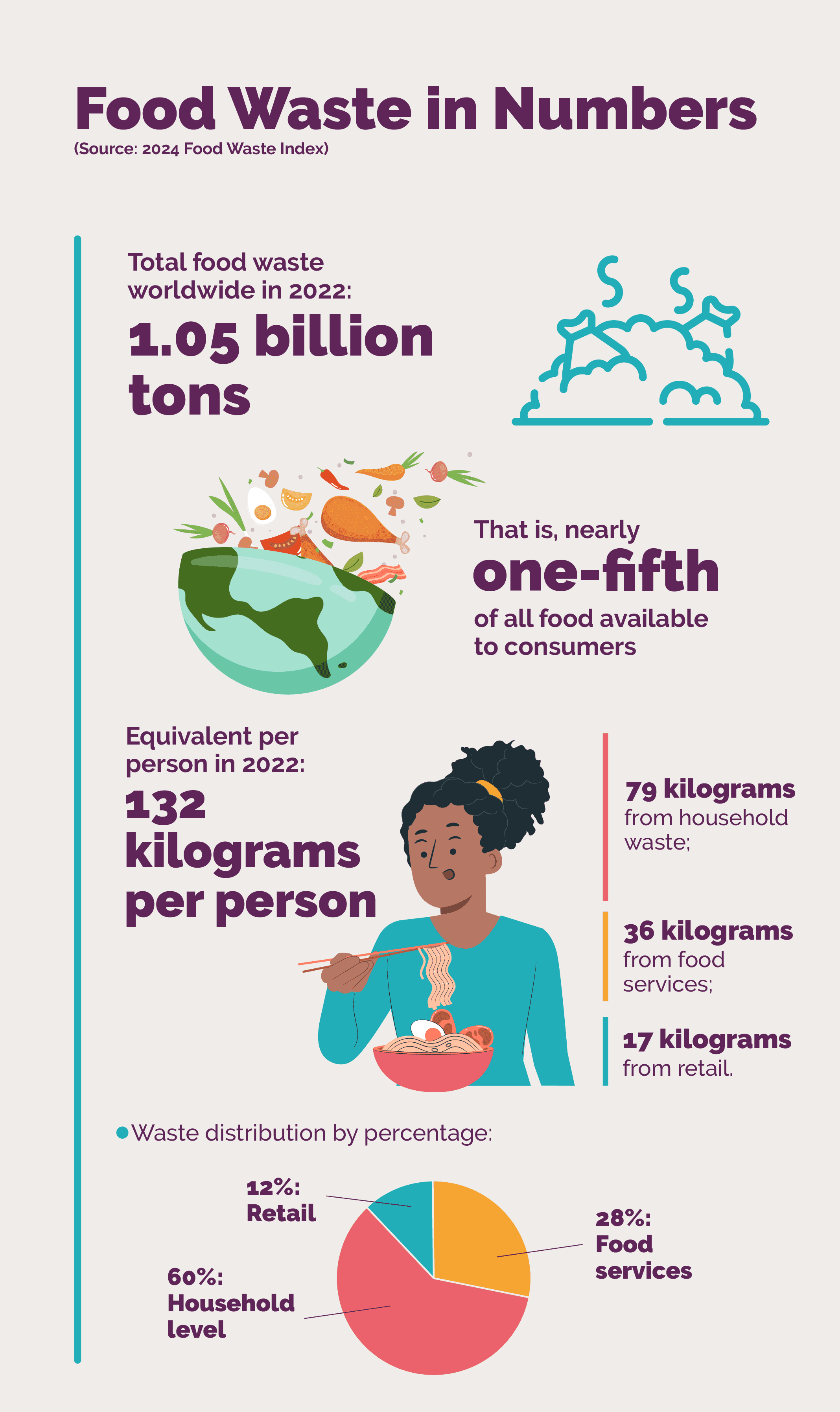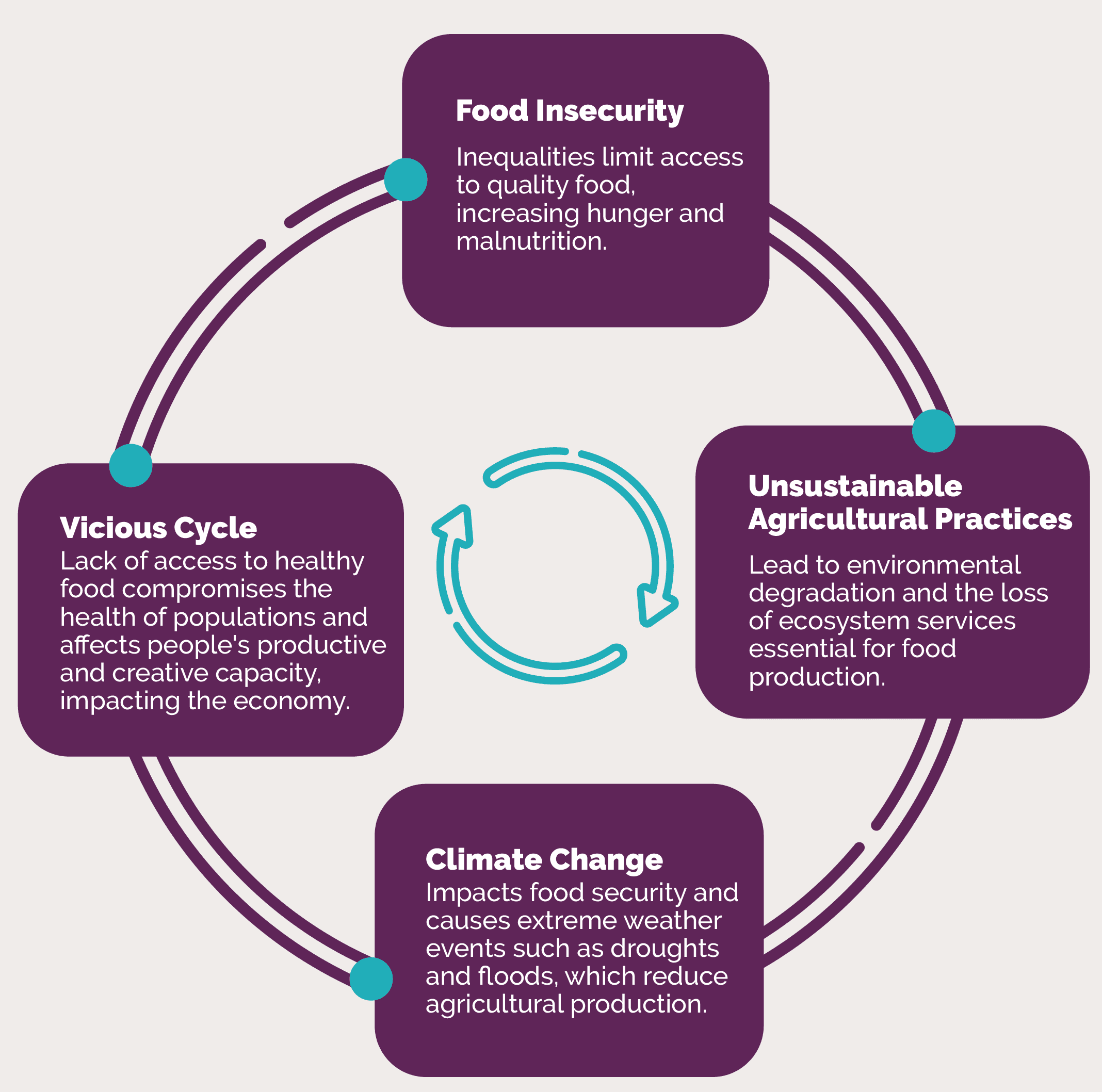
27/09/2024
More than 1 billion tons of food are wasted every year. Can the Circular Economy be part of the solution?
Check out the analysis of the 2024 UN "Food Waste Index" report, highlighting the connections between food waste and global crises.
By Arlene Carvalho, from Circular Movement
According to the United Nations Environment Programme (UNEP), about 783 million people currently face hunger worldwide, and 150 million children under the age of five suffer from malnutrition and stunted growth. These alarming figures were revealed in the “2024 Food Waste Index” report, published in March this year. The numbers are contradictory, considering that in 2022 alone, approximately 1.05 billion tons of food were wasted, according to the same report.
In other words, while large quantities of food are lost or wasted, millions of people continue to suffer from hunger and malnutrition. Given this volume of lost or wasted food, is the current production not sufficient to meet the needs of all the planet's inhabitants?
Before answering this question, it is important to differentiate the concepts of food loss and food waste.

From this, we can also question: if there were a real concern about creating strategies to reduce food waste, could the waste, quantified by the UN report, be significantly reduced at any scale?
- Each year, the amount of food lost and discarded is equivalent to around 1 trillion dollars;
- Food losses and waste contribute to 8-10% of greenhouse gas emissions;
- The conversion of natural ecosystems to agriculture is the leading cause of habitat loss, and this significant biodiversity loss equates to nearly one-third of the world's agricultural land.

It is in this context that the Circular Economy emerges as an alternative, especially considering circular food systems—capable of promoting efficiency and responsibility at all stages of the food chain.
The Question of “How to Do It”
For Prof. Dr. Edson Grandisoli, ambassador and educational coordinator of Movimento Circular, “it is essential that practices are adopted to reduce food waste. This practice should be considered unacceptable when we consider the number of people who go hungry every day. Agroforestry practices and the creation of urban gardens, for example, teach us about circularity, good nutrition, and quality of life, in addition to valuing what is close to us and comes from the earth.”
But how can this be done? Grandisoli states that it is not a simple task. “It is necessary to rethink practices and create a new culture related to food consumption. Abundance often becomes synonymous with waste. Buying only what is necessary, putting only what can be eaten on the plate, selling cheaper fruits and vegetables that are out of aesthetic standards, and valuing recipes that make full use of food are just some of the measures we can implement immediately.”
In the Circular Economy, food is seen as a source of life, where leftovers return to the earth as compost, whether in homes or community gardens. It is a way to transform organic waste into nutrients, produce healthy food, and enrich and regenerate the soil. Combining traditional techniques with new technologies can help ensure global nutritional needs are met efficiently and equitably.
However, we need to think beyond the waste that occurs in markets and homes. After all, the stages of harvest, transport, processing, and distribution also represent significant losses, and within more circular food systems, these stages also need attention.
"It is important to highlight that there is a certain pattern when we talk about food loss and waste. Research indicates that in wealthier countries, waste is more prevalent. In poorer countries, losses are more prevalent. Therefore, each case must be analyzed individually, considering the entire production, consumption, and disposal chain, in the search for integrated solutions," emphasizes the ambassador of Movimento Circular.
Interconnections
We are bombarded daily with news about environmental, economic, social, political, health, food security, energy, and psychological crises, among others. This overwhelming volume of information contributes to a feeling of pessimism regarding our existence and the preservation of planet Earth, reinforcing the concept of the so-called “polycrisis”—defined by French anthropologist, sociologist, and philosopher Edgar Morin as “the interconnection and complexity of multiple crises manifesting simultaneously in different global systems.”
In this way, we can conclude that the crises we face not only coexist but are interconnected—making the search for effective solutions quite challenging. The UN report provides a panorama that serves as an example of the connection between economic, environmental, and food security crises. But after all, how are these different crises related? See below:

This can be thought of on different scales. But it is important to emphasize that, in a global context, the relationship between these crises is even more evident. For example, while some countries deal with an excess of food waste, others struggle with extreme hunger. However, data on this are still scarce. The report also notes that only four G20 countries—Australia, Japan, the UK, and the US—and the European Union have adequate food waste estimates to monitor progress by 2030. Canada and Saudi Arabia have estimates for households. Brazil is expected to have these data by the end of this year.
"Food loss and waste are global challenges. Technology transfer, investments, fair financing, and encouraging changes in practices through information and education for circularity are some vital points for change," concludes Grandisoli.
Therefore, adopting circular practices in food not only minimizes waste but also strengthens communities, promoting greater resilience in the face of crises. By transforming the way we think about food, we can work towards a circular, sustainable, and just food system—capable of meeting everyone's needs.
Discover more
In the same subject:

Magalu’s Electronic Drive sends 87 tons of waste for recycling in São Paulo
Carried out in partnership with Circular Movement, the Magalu initiative combined teacher training, community mobilization and reverse logistics to expand the proper disposal of electronics.
